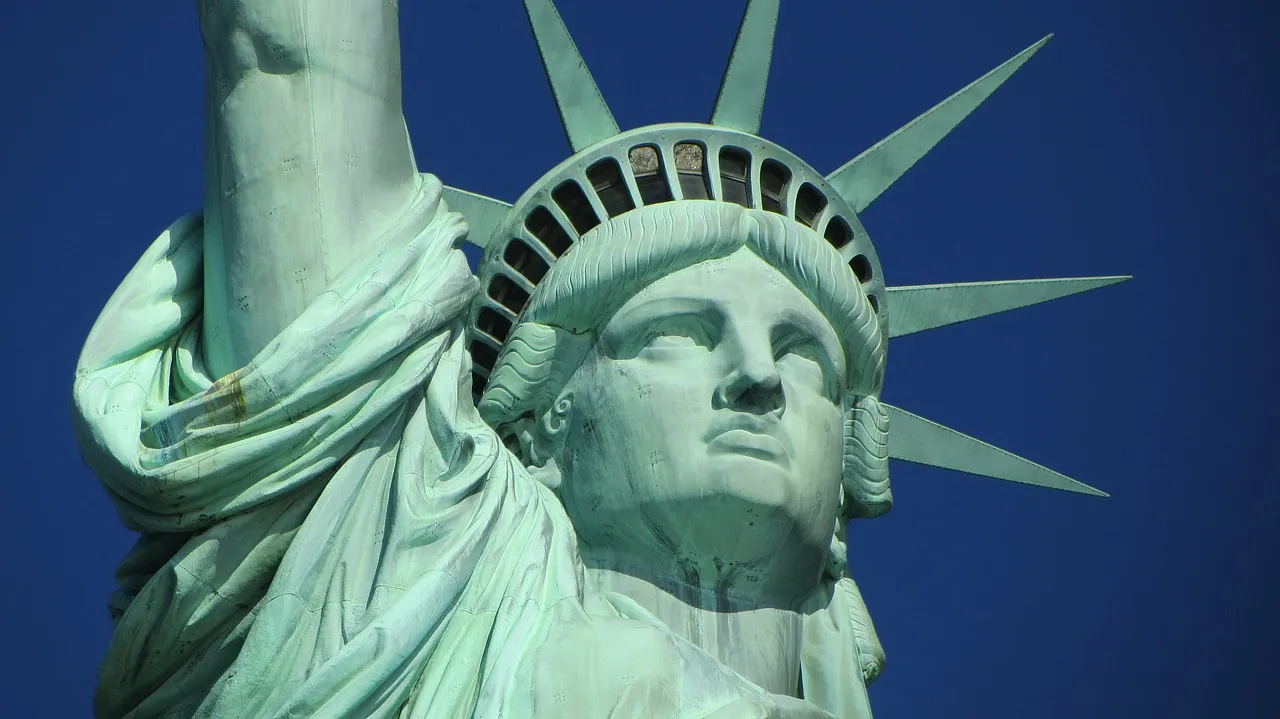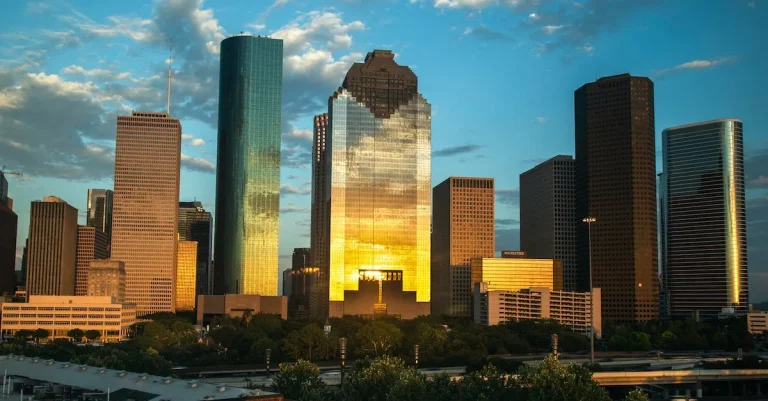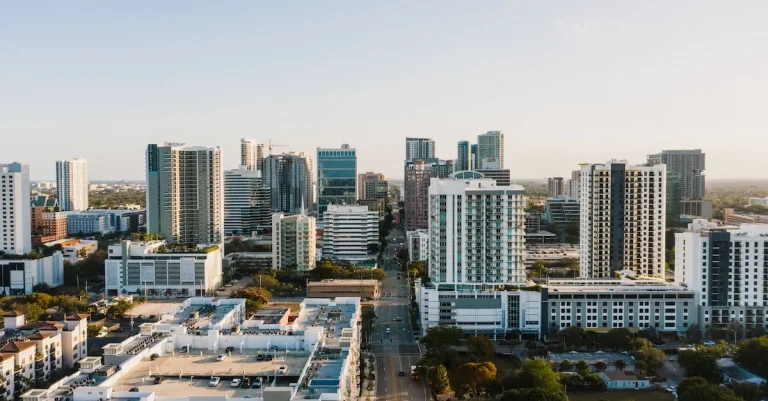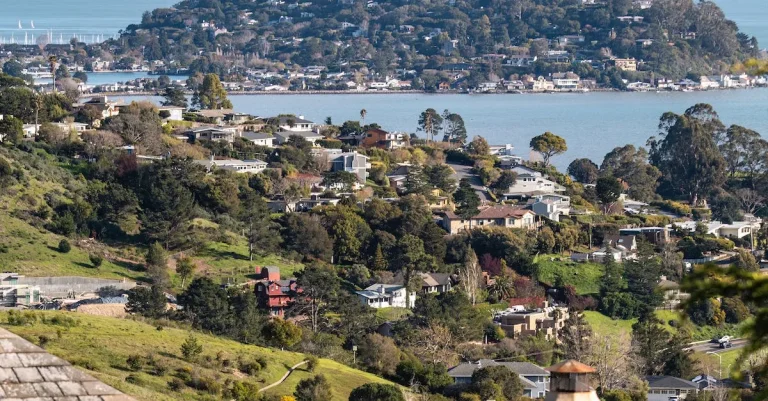How Big Is New York?
New York City looms large in the American imagination as a bustling metropolis full of skyscrapers, crowded streets, and diverse neighborhoods. But when it comes to just how big New York really is in terms of sheer physical size, many are unsure of the actual numbers and dimensions involved.
If you’re short on time, here’s a quick answer to your question: The land area of New York City is 302.6 square miles (783.8 km2). However, the urban area, metro area, and broader NY metropolitan region extend far beyond the city limits.
In this comprehensive guide, we’ll define New York City geographically, look at its population size, examine the dimensions of the broader New York metro area, see how it compares to other major U.S. cities, and understand why the Big Apple feels so huge.
Defining New York City Geographically
New York City is a vast and bustling metropolis that stretches across a significant portion of the northeastern United States. When it comes to understanding the size and scope of this iconic city, it is important to consider its geographical boundaries and divisions.
Here, we will explore the different ways in which New York City is defined geographically.
City Proper
The term “New York City” can refer to the city proper, which is made up of five boroughs: Manhattan, Brooklyn, Queens, The Bronx, and Staten Island. These boroughs are further divided into various neighborhoods, each with its own unique characteristics and charm.
The city proper covers a land area of approximately 302.6 square miles (783.8 square kilometers). It is important to note that the city proper does not include the surrounding suburbs and metropolitan area.
5 Boroughs
The five boroughs of New York City are distinct regions that make up the city as a whole. Manhattan, often referred to as “The Big Apple,” is the most densely populated borough and is home to iconic landmarks such as Times Square and Central Park.
Brooklyn, known for its vibrant arts and culture scene, is the most populous borough. Queens, the largest borough by land area, is known for its diversity and is home to bustling neighborhoods like Flushing and Astoria.
The Bronx, located on the mainland, is known for its rich history and famous attractions like Yankee Stadium. Staten Island, the least populated borough, offers a more suburban feel with its picturesque parks and waterfront views.
Urban Area
When looking at the size of New York City, it is also important to consider its urban area, which extends beyond the city proper. The New York-Newark-Jersey City metropolitan area is one of the largest and most populous urban areas in the United States.
It encompasses not only the five boroughs of New York City but also surrounding counties in New York, New Jersey, and Connecticut. The urban area is home to over 20 million people, making it a vibrant and dynamic hub of activity.
Understanding the geographical boundaries and divisions of New York City helps paint a clearer picture of its size and significance. Whether you’re exploring the boroughs or venturing beyond the city proper, there is no shortage of things to see and experience in this incredible urban landscape.
New York City’s Population Size
Historical Growth
New York City has a rich history of population growth. From its early beginnings as a Dutch settlement in the 17th century, the city has steadily grown into one of the most populous urban areas in the world.
Immigrants from various parts of the globe have flocked to the city, seeking opportunities and contributing to its diverse cultural fabric. In the 19th and early 20th centuries, waves of immigrants from Europe, particularly from countries like Italy, Ireland, and Germany, arrived in New York City in search of a better life.
This influx of newcomers significantly expanded the population of the city.
During the mid-20th century, the city experienced another surge in population due to the Great Migration of African Americans from the Southern states. This influx of people seeking better opportunities and escaping racial discrimination contributed to the city’s growth.
However, it’s important to note that in recent decades, the population growth rate has slowed down compared to the earlier years.
Current Numbers
As of the latest available data, New York City’s population is estimated to be over 8 million people. It is the most populous city in the United States and one of the most densely populated cities in the world.
The city’s population is diverse, with residents hailing from various ethnic, cultural, and socio-economic backgrounds. It is known as a melting pot of different cultures and nationalities, making it a vibrant and cosmopolitan city.
New York City’s population is constantly changing due to factors such as birth rates, migration, and mortality rates. The city’s dynamic nature ensures that the population continues to evolve over time.
It is a city that attracts people from all over the world, whether it be for work, education, or simply to experience the vibrant atmosphere and opportunities it offers.
Density
One of the defining characteristics of New York City is its population density. With a land area of approximately 305 square miles, the city packs a large number of people into a relatively small space.
This high population density is evident in the crowded streets, bustling neighborhoods, and towering skyscrapers that make up the city’s iconic skyline.
According to recent data, the population density of New York City is around 27,000 people per square mile. This figure is significantly higher than the national average and is among the highest in the United States.
The dense population contributes to the vibrant energy and fast-paced lifestyle that the city is known for.
For more information on New York City’s population and its historical growth, you can visit the official website of the New York City government. It provides comprehensive data and insights into the city’s demographics.
The New York Metro Area
The New York metro area is one of the most populous and vibrant regions in the United States. Spanning across multiple states, it encompasses a vast area with diverse communities, bustling cities, and stunning natural landscapes. Let’s explore the different aspects of the New York metro area.
Metropolitan Statistical Area
The Metropolitan Statistical Area (MSA) is a geographic region defined by the U.S. Office of Management and Budget (OMB) for statistical purposes. In the case of New York, the New York-Newark-Jersey City MSA includes New York City, as well as parts of New Jersey and Pennsylvania.
With a population of over 20 million people, it is the largest MSA in the United States.
Within the New York MSA, you’ll find the iconic landmarks of New York City, including the Statue of Liberty, Times Square, and Central Park. The city is known for its vibrant arts and culture scene, world-class museums, and diverse culinary offerings.
It’s no wonder that New York City is often referred to as the “Big Apple” and attracts millions of visitors each year.
Combined Statistical Area
The Combined Statistical Area (CSA) expands on the MSA concept by including adjacent metropolitan and micropolitan areas that have strong economic and social ties to the core MSA. In the case of New York, the New York-Newark CSA extends further to include additional counties in New York, New Jersey, Pennsylvania, and Connecticut.
This broader definition of the New York metro area reflects the interconnectedness of the region’s economy, transportation systems, and cultural influences. It encompasses cities like Newark, Jersey City, and Yonkers, as well as suburban communities and rural areas.
The New York-Newark CSA is home to over 23 million people, making it one of the most densely populated regions in the country.
Commuter Shed
The commuter shed refers to the area from which people commute to work in the central core of the metro area. It extends beyond the official boundaries of the MSA and CSA and takes into account the commuting patterns of residents.
In the case of New York, the commuter shed includes parts of neighboring states such as Connecticut, Pennsylvania, and even parts of Massachusetts.
This expansive commuter shed highlights the importance of transportation infrastructure, including highways, railways, and public transit, in facilitating the movement of people within the New York metro area.
It also demonstrates how the economic and social influence of the region extends far beyond its immediate borders.
For more information about the New York metro area, you can visit the official website of the U.S. Census Bureau or explore resources provided by local government agencies and tourism boards.
How New York Compares to Other Major U.S. Cities
By Land Area
New York City, often referred to as the Big Apple, is known for its bustling streets and towering skyscrapers. With a total land area of approximately 302.6 square miles, it is the 27th largest city in the United States in terms of land area.
However, when compared to other major cities, New York City is relatively compact. For instance, Los Angeles, the second-largest city in the U.S., covers a land area of about 468.7 square miles, making it nearly 1.5 times larger than New York City.
Despite its smaller land area, New York City manages to pack a punch with its vibrant culture, diverse neighborhoods, and iconic landmarks.
By Population
When it comes to population, New York City is the most populous city in the United States. As of 2021, the estimated population of New York City is over 8.8 million people. This means that it is home to more residents than any other city in the country.
In fact, the population of New York City is larger than the combined populations of Los Angeles and Chicago, the second and third most populous cities in the U.S., respectively. The city’s population density is also notable, with over 27,000 people per square mile.
This high population density contributes to the vibrant energy and diverse atmosphere that New York City is known for.
Notable Rankings
New York City consistently ranks high in various categories, showcasing its prominence on the global stage. For example, it is often considered one of the world’s leading financial centers, with Wall Street serving as the heart of the city’s financial district.
Additionally, New York City is renowned for its cultural offerings, boasting some of the most prestigious museums, theaters, and art galleries in the world. It is also a hub for international tourism, attracting millions of visitors each year who come to experience its iconic landmarks such as the Statue of Liberty, Times Square, and Central Park.
Furthermore, New York City frequently tops the lists of the most visited cities in the United States, with millions of tourists flocking to the city to explore its vibrant neighborhoods, indulge in its diverse culinary scene, and immerse themselves in its rich history and culture.
The city’s influence can also be seen in popular culture, as it often serves as the backdrop for movies, TV shows, and songs, further solidifying its status as an iconic metropolis.
Why New York Feels So Enormous
New York City is often referred to as the “concrete jungle,” and for good reason. With its towering skyscrapers, bustling streets, and diverse population, the city has a larger-than-life reputation that makes it feel enormous. There are several factors that contribute to this perception.
Iconic Architecture
One of the main reasons why New York feels so enormous is its iconic architecture. The city is home to some of the tallest and most recognizable skyscrapers in the world, such as the Empire State Building, One World Trade Center, and the Chrysler Building.
These towering structures not only dominate the skyline but also serve as symbols of New York’s grandeur and ambition. The sheer scale of these buildings can make anyone feel small in comparison, adding to the sense of enormity.
Global Influence
New York City is a global hub of finance, culture, and innovation. It attracts people from all over the world who come to pursue their dreams and make their mark. As a result, the city is a melting pot of different cultures, languages, and ideas.
The diversity and cosmopolitan nature of New York contribute to its sense of vastness. Walking through the streets, you can hear a multitude of languages, see people from all walks of life, and experience a wide range of cuisines.
This global influence creates a feeling of expansiveness and endless possibilities.
Media Dominance
New York City is often portrayed in movies, TV shows, and other forms of media. Its iconic landmarks, such as Times Square and Central Park, are frequently featured, giving the impression that the city is larger than life.
Additionally, the media industry itself is heavily concentrated in New York, with major news outlets, publishing houses, and entertainment companies headquartered there. This media dominance further amplifies the city’s presence and contributes to its perception of enormity.
Conclusion
While the land area of New York City proper is only about 300 square miles, the broader metropolitan region covers over 13,000 square miles and is home to 23 million people. With its towering buildings, dense crowds, and outsized presence on the world stage, New York has established itself as a truly gigantic city. The numbers only tell part of the story when it comes to just how big New York really is.








